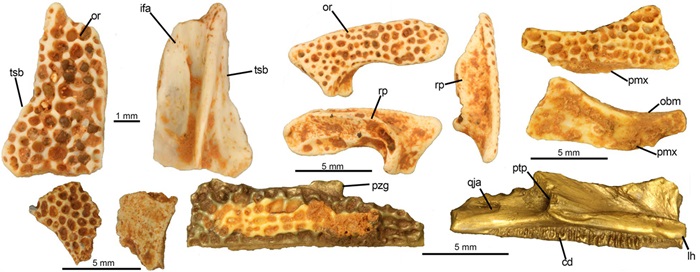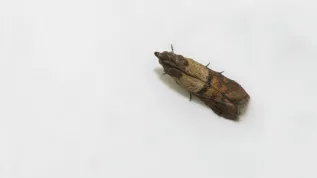Paleontologist: Reptile and amphibian species in the jungles of Europe 37 million years ago were incredibly diverse

16/08/2025 update: 16/08/2025
2 minutes of reading
New fossils of salamanders, frogs, and lizards from 37 million years ago, including relatives of "African bull frogs," large venomous lizards now inhabiting Central and North America, and extinct, heavily armored lizards, have been described by paleontologists from Poland and Canada.
These fossils come from an abandoned phosphate mine in Quercy, southern France. This site—called La Bouffie—is estimated to be around 37 million years old, coinciding with the late Eocene, a period characterized by a tropical climate.

"The phosphate mines in the Quercy region have been yielding rich finds of animal fossils since the late 19th century. The site is known primarily for its highly diverse mammalian fauna, which even included marsupials and primates. Other animal groups were poorly known until now. Therefore, now, together with Alfred Lemierre from the Royal Tyrrell Museum of Paleontology in Canada, we have examined fossils of amphibians and reptiles, describing numerous new specimens," Dr. Georgios Georgalis from the Institute of Systematics and Evolution of Animals of the Polish Academy of Sciences in Krakow told PAP.

These fossils belong to many different groups of reptiles and amphibians. "Some of them are exotic groups that have no current relatives in Europe. At La Bouffie, we found relatives of the "Gila Monster" (large, venomous lizards that inhabit Central and North America today), at least four different species of iguana, relatives of the "African bull frogs," and a number of completely extinct groups of reptiles, such as glyptosaurs (heavily armored lizards) and paleovaranids (early distant relatives of modern monitor lizards, such as the Komodo dragon). All this diversity created a fascinating mosaic of herpetofauna in the European jungles 37 million years ago," the paleontologist explained.
Of particular interest to researchers are two new species of lizards that were previously unknown to science.

"Cadurcopanoplos was a heavily armored lizard from the glyptosaurid family. Its name means "fully armored lizard from the Cadurci" in Greek, the Cadurci being the people who inhabited the Quercy area during Roman times. As the name suggests, this large lizard was completely covered in strong, thick armor and osteoderms all over its body, providing it with powerful protection, similar to the armor of a medieval knight. Cadurcopanoplos differs from other glyptosaurid lizards known in Europe in its head osteoderm anatomy. Glyptosaurids ultimately became extinct in Europe at the end of the Eocene epoch, approximately 34 million years ago, when climate cooling and drastic weather deterioration affected the continent's fauna and environment," explained Georgios Georgalis.
Phosphoriguana, in turn, the paleontologist continued, is a new species of iguana. "Its name in Greek means 'phosphorus iguana,' referring to the fact that its fossil was found in a phosphate mine. Phosphoriguana was a relatively small iguana that differed from other iguanas in its dentition and the anatomy of its lower jaw," he explained.
The research was conducted under a grant funded by the National Science Centre. The results were published in the open access Swiss Journal of Palaeontology . (PAP)
akp/ zan/
The PAP Foundation permits free reprinting of articles from the Nauka w Polsce website, provided that you notify us by email once a month of your use of the website and cite the source of the article. On portals and websites, please include the linked address: Source: naukawpolsce.pl, and in journals, please include the annotation: Source: Nauka w Polsce website - naukawpolsce.pl. This permission does not apply to information in the "World" category or any photographs or video materials.
Before adding a comment, please read the Forum Rules of the Nauka w Polsce website.
Dear Reader, In accordance with the Regulation (EU) of the European Parliament and of the Council of 27 April 2016 on the protection of natural persons with regard to the processing of personal data and on the free movement of such data, and repealing Directive 95/46/EC (General Data Protection Regulation), we hereby inform you about the processing of your data. The data controller is the PAP Foundation, with its registered office in Warsaw at ul. Bracka 6/8, 00-502 Warsaw. This data is collected as part of your use of our services, including websites, services, and other functionalities provided by the PAP Foundation, primarily stored in cookies and other online identifiers installed on our websites by us and our trusted partners of the PAP Foundation. The collected data is used solely for the following purposes: • providing services electronically • detecting abuses in services
• statistical measurements and service improvement
The legal basis for data processing is the provision and improvement of the service, as well as ensuring security, which constitutes the legitimate interest of the controller. At the request of the controller, data may be shared with entities authorized to obtain data under applicable law. The data subject has the right to access, rectify, and erase the data, and to restrict its processing. The data subject may also withdraw consent to the processing of personal data.
Please send all notifications regarding personal data protection to [email protected] or in writing to the PAP Foundation, ul. Bracka 6/8, 00-502 Warsaw, with the note "personal data protection"
More information about the processing of personal data and your rights can be found in the Privacy Policy. Learn more. I consent
naukawpolsce.pl







